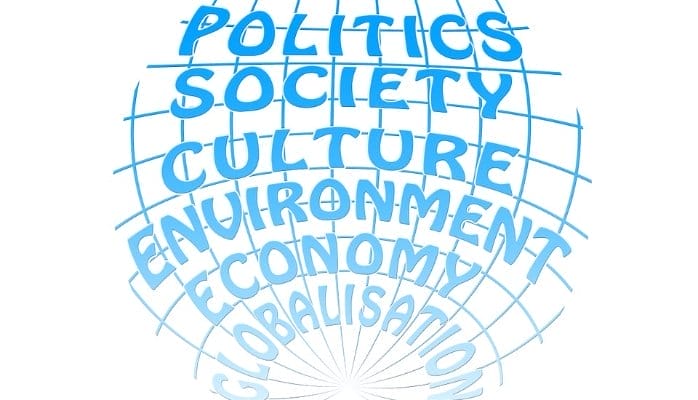A few weeks ago I gave a webinar reflecting on 2015, a very global year for me as dean of the Wharton School. (Watch a full recording of the Global Conversations Webinar) As part of the Global Conversations Tour, I visited nearly 20 countries on four continents meeting Wharton alumni, friends and family who are doing great things all over the world. I was struck by their international reach, by the variety and quality of leadership positions they hold, and, above all, by their ongoing engagement with the School.
Our alums were interested in what is going on at Wharton, and I was happy to share my perspectives. But I always open events outside the U.S. the same way: Whether in Delhi, Tokyo, London or Hong Kong, I told audiences that Wharton–and America more generally–has a lot to offer the world. But we have much to learn too. And you can’t learn about the world sitting in your office. You have to go out into the world, with your eyes and ears wide open.
Here are my top 10 insights from a global year in the life of the Wharton School.
- “Global cities” is more than a cliché.
Sociologists are right that some cities really are both parts of their countries and citizens of the world, cosmopolitan in every sense of that word. This is how New Yorkers think. But in the U.S., I’d add Los Angeles, Miami, and San Francisco to the list. Outside of America, it used to be Singapore and Hong Kong. Now I’d include Dubai, London, and Shanghai too.
And some of these cities increasingly operate as offshore commercial capitals for other geographies—Miami for Latin America, London for Europe, Singapore for Southeast Asia, and Dubai for the Middle East and North Africa.
- Everyone watches American politics even if it is hard to understand.
One inevitability of international travel is lots of time staring at the international news channels. U.S. presidential candidates are taking up a lot of the airtime, invariably followed by quizzical non-American reactions to a uniquely American process.
Good sport for news junkies. But it comes with a risk—the utterings of candidates locked in mortal primary campaign combat tend to get confused with U.S. policy and/or the spirit of the country. America is still a country of immigrants where equality of opportunity trumps equality of outcomes.
- The collapse of commodity prices has created lots of political casualties.
Decrying our leaders for their lack of leadership is a political perennial, not least in the U.S. But the din has been at fever pitch in countries as apparently diverse as Australia, Brazil, and Malaysia. What do they all have in common? Outsize dependence on commodity exports.
With plummeting commodity prices, it’s no surprise that my home country of Australia has, once again, changed prime ministers, that Brazil wants to impeach its president, and that Malaysia’s prime minister has been accused of corruption.
Political leaders have flaws and we expect too much of them. This is why it is so hard to govern. But the heat really gets turned up when the economy turns south.
- Demography isn’t quite destiny, but it really matters.
The aging of the one-billion strong Western world is already creating immense challenges in terms of budgets, healthcare, and pensions, and it soon will for China too —the first country in history to get old before it is rich. But not all the world is aging. Africa, South Asia, and Southeast Asia (almost 4 billion people) all have very young and growing populations. This no doubt creates lots of tricky issues, not least regarding job creation.
The global south’s demography also creates immense business opportunities. You cannot help but be struck by the prospect of hundreds of millions–if not billions–of new middle class consumers in the coming decades. Getting there won’t be easy. But what we have long thought of as the least developed parts of the world economy will become ever more important drivers of global growth—above all because of population trends.
- Even in a very global world, you have to understand local culture.
High-rise elevators (or lifts, in the Anglo!) are part and parcel of modern global business. Have you ever noticed how different the experience is depending on where you are? In Manhattan, security barriers for elevators are everywhere. In Beijing’s CBD, you need sharp elbows if you don’t want to be late for meetings. In Tokyo, getting into elevators is a very genteel affair. But with Japan’s culture of deference and respect, no one knows who should get out first.
In China, dinners end when the food stops coming, and wine is for toasts not tasting. In Europe, lingering after dinner over drinks is de rigueur, and even more so in the Latin world.
The variety, resilience and vibrancy of cultures all over the world makes visiting different places so enjoyable and eye opening. But it is also remarkable given how global the world has become. English really is the global language of business. But I don’t expect to see a global spread of high tea (scones, strawberry jam, whipped cream and all).
- The “sharing economy” is real and spreading.
Everyone knows about Uber and taxis, Airbnb and hotels, not to mention niche copycats in markets around the world. But here is one I didn’t know about until recently—Blablacar versus intercity rail. I don’t know the etymology of the company name, but I now know this ride sharing service moves more people among European cities than the venerable French national rail system, SNCF. Want to get from Paris to Lyon? Blablacar will find you private cars with spare seats, at a low price. More than internet hitchhiking, but less than a commercial intercity bus.
The sharing economy is spreading for two reasons. The essence of markets is connecting people with something to sell with people who might want to buy it. We now know this is a fantastic way to create service businesses. But the second reason is that these are “no fixed cost” businesses. Uber and Blablacar don’t own cars and Airbnb doesn’t own vacation properties. In a world where online is challenging “offline,” fixed assets are a luxury many businesses can’t afford.
- All countries are desperately seeking innovation through technology and entrepreneurship.
From China’s latest (13th) five year plan—dubbed “13.5” by the government, to signify less Lenin and more tech—to the Arab Gulf’s search for an economic future beyond oil and gas, to Japan’s efforts to reverse 25 years of stagnation, “innovation and entrepreneurship” is today’s most frequently occurring phrase when it comes to the economic path forward. Then there is the proliferation of Silicon’s beyond the tech-fuelled Valley, e.g. Silicon Fen (Cambridge, England), Silicon Glen (Scotland), Silicon Beach (Santa Monica), and Silicon Harbour (Sydney).
People who study Valley clones tend to focus on Israel and Taiwan as the places that have done best in the “imitation is the highest form of flattery” game. But that isn’t my main point. Rather, what strikes me about economic policy all around the world is the centrality of entrepreneurship, innovation and technology.
This is not only because of all the great things that Silicon Valley has produced. It is also because productivity is such a challenge in the non-tech economy. The productivity imperative will only intensify; so will the world’s focus on EIT.
- Infrastructure is key to realizing the full potential of emerging markets.
China is the clear exception that proves the rule. Infrastructure is the biggest challenge facing emerging markets. Business travelers increasingly are greeted by shiny new airport terminals when they land. But then faced with the impossible traffic, intermittent power, and unreliable mobile phone reception. And then there are the challenges of clean water. Not to mention the need for business regulatory soft infrastructure to take on corruption large and small.
That is the negative side of emerging markets. But the positive side is equally valid. Improving infrastructure would unleash the full potential of countries as different as India, Indonesia, and Nigeria. We traditionally look to government as the infrastructure provider-in-chief. But with budgets stretched and taxing capacity limited in most emerging markets, the private sector must and is playing an ever larger role. Look for an expanded version of “public-private partnerships” to be a growing feature of economic development.
- A soft landing for the Chinese economy is in everyone’s interests.
China is in the midst of trying to land its Airbus 380 economy on a narrow runway with lots of swirling crosscurrents. But the engines are strong and the pilots are experienced and skilled. So I am still betting on China to pull off its soft landing transformation from the 10%+ annual growth rates of recent decades built on government investment, exports, and manufacturing into higher quality ~5% growth based on domestic consumption, services, and the private sector.
What has become increasingly clear in the past year is how much China’s outcome will affect other economies—not only the many Asian economies for whom China is their largest trading partner, but commodity exporters from Canada to Brazil, Russia to Saudi Arabia, and also high quality German exporters and American financial markets. To update the hoary economic adage, when China sniffles, the world catches a cold.
- The U.S. is the world’s “back to the future” growth engine.
I was living outside the U.S. in the wake of the recent financial crisis, spending time traveling in Asia and Europe. The global view was simple: The U.S. was yesterday’s economic power and, given Wall Street’s excesses, good riddance. While much of the world was pinning its political hopes on Barack Obama, it had given up hope on the American economy.
What a difference eight years makes. American innovation in the form of Apple and Google, Facebook and Amazon, is even more the envy of the world. But at least as importantly, the world is looking to the U.S. as the key growth engine for the global economy. Americans might consider our growth too slow, certainly too slow to allay the economic insecurities of many. But for the world, American growth is both a beacon of hope and essential to global prosperity.
Editor’s note: The original version of this article appeared on LinkedIn on Feb 17, 2016.

























